Geology
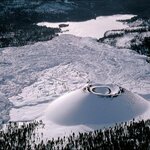
A new analysis of water and other elements contained in olivine-rich basalt samples gathered from cinder cone volcanoes that surround Lassen Peak in Northern California, at the southern edge of the Cascade chain, shows water is key for how magma forms deep underground and produces explosive volcanoes in the Cascade Range.
The discovery helps solve a puzzle about plate tectonics and the Earth's deep water cycle beneath the Pacific Ring of Fire, which scientists began studying in the 1960s to understand the region's propensity for big earthquakes and explosive volcanoes. The ring stretches from…
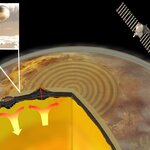
Detecting an earthquake on Venus is no trivial task.
For one thing, it is not a surface like we think of surface. It is under crushing pressure and the temperate is almost 900 degrees. Ordinary seismic instruments aren't suited for that. But the upper atmosphere is not so bad by comparison and so researchers hope to deploy an array of balloons or satellites that could detect Venusian seismic activity.
And instead of using vibrations they will use sound.
Infrasonic - low frequency - sound waves, much lower than an audible voice, are already measured on Earth. Volcanoes, earthquakes, ocean…

Antarctica's Dry Valleys may not be so dry. A helicopter-borne sensor that penetrates below the surface of large swathes of terrain has found compelling evidence that ice-free McMurdo Dry Valleys may be hiding a salty aquifer.
Brines, or salty water, form extensive aquifers below glaciers, lakes and within permanently frozen soils. If they are present, it might provide answers about the biological adaptations of previously unknown ecosystems that persist in the extreme cold and dark of the Antarctic winter.
"Over billions of years of evolution, microbes seem to have adapted to conditions in…

On April 25th, a 7.8-magnitude earthquake struck Nepal, claiming over 5,000 lives and affecting millions more. Relief efforts are under way and satellite imagery is helping to visualize the damage but radar images from the ESA Sentinel-1A satellite showed why Nepal’s capital, Kathmandu, experienced so much damage
The maximum land deformation, shown in before and after pictures, is 8 miles away. The two acquisition dates lead to rainbow-colored interference patterns in the combined image, known as an ‘interferogram’, enabling scientists to quantify the ground movement.
Sentinel-…
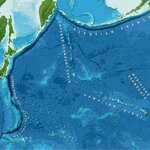
Some of the ocean's underwater volcanoes did not erupt from hot spots in the Earth's mantle but instead formed from cracks or fractures in the oceanic crust, which would help explain the spectacular bend in the famous underwater range known as the Hawaiian-Emperor seamount chain, where the bottom half kinks at a sixty degree angle to the east of its top half.
It has long been accepted that as the Earth's plates move over fixed hot spots in its underlying mantle, resulting eruptions create chains of now extinct underwater volcanoes or 'seamounts'.
One of the most famous is the Hawaiian-…
Can earthquakes ever be predicted? This question is timely after the magnitude 7.8 earthquake that struck Nepal recently. If authorities had more warning that the earthquake was coming, they may have been able to save more lives.
While Nepal is a documented area of previous seismic activity, at the moment there is no technique that provides predictions of sufficient clarity to allow for evacuations at short notice. So if we cannot predict these events now, are there avenues of research to provide useful predictions in the future?
The key word here is “useful”. It is possible to make long-term…
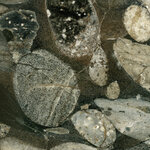
In the ongoing conflict between science and young Earth creationism, evolution is usually a main point of contention. The idea that all life on Earth evolved from a common ancestor is a major problem for young Earth creationists.
As a geologist, though, I think that the rocks beneath our feet offer even better arguments against young Earth creationism. For the young Earth creationist model doesn’t square with what you can see for yourself. And this has been known since before Darwin wrote a word about evolution.
Conglomerate rocks aren’t made overnight. James St John,…
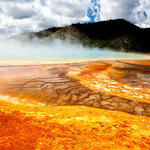
Seismologists have discovered a massive magma reservoir beneath the Yellowstone supervolcano in Wyoming, US, that suggests its volcanic system could be more than 5.6 times larger than was previously thought.
Although it was already known that Yellowstone had one magma reservoir, located about 5-16km (3-10 miles) below the surface, the new study, published in Science, has revealed another, much larger reservoir sitting directly below the first, located around 20-50 km (12-30 miles) below the surface. This reservoir is thought to have a volume of around 46,000 cubic km – compared to a volume of…

The Calbuco volcano, a 2,000 meter peak in southern Chile, sent a column of ash about 15 kilometers skywards twice on the night of April 22 and early the following morning.
As the risk of deadly flows of ash and hot air was immediate, a 20 kilometer radius evacuation zone was declared.
The event was spectacularly visible from Puerto Montt, a city of nearly 200,000 inhabitants, only 30 km away. It seems to have begun within barely five hours of warning signs being first detected by local seismometers.
There two big eruptions over seven hours caused ash to fall in the Argentinian town of…
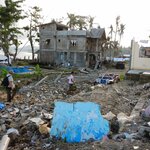
In 2013, Typhoon Haiyan killed more than 6,000 people and destroying nearly $3 billion worth of property in the Philippines. While the country is still recovering from the storm, researchers have found that an aquifer on the island of Samar inundated with salt water by the storm surge could remain undrinkable for up to 10 years - a second aquifer on the island that was also inundated has recovered much more quickly.
Geology and infrastructure play key roles in determining whether aquifers that provide drinking water are inundated with seawater during a typhoon or hurricane and how long the…